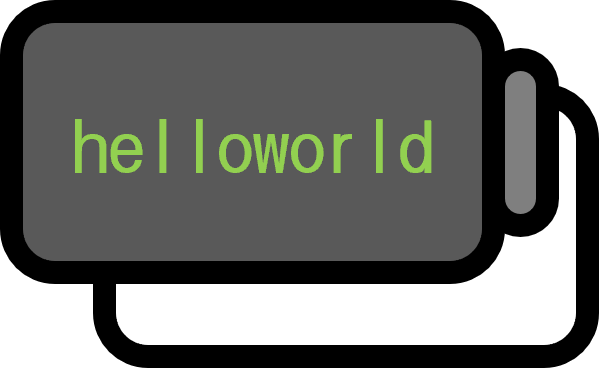Knuth's Up-Arrow Notation: Why ^ is Used for Exponentiation in Programming
Definition
Knuth’s up-arrow notation is a notation devised to represent large integers.
Addition, Multiplication, and Exponentiation
Addition $x + n$ is defined as follows:
$$ x + n = x + \underbrace{1 + \cdots + 1}_{n \text{ times}} $$
Multiplication $xn$ is defined as follows:
$$ xn = \underbrace{x + \cdots + x}_{n \text{ times}} $$
Exponentiation $x^{n}$ is defined as follows:
$$ \begin{align*} x^{n} =& x \uparrow n \\ =& \underbrace{x \cdots x}_{n \text{ times}} \end{align*} $$
Tetration and Pentation
Tetration $x \uparrow^{2} n$ is defined as follows:
$$ \begin{align*} x \uparrow^{2} n =& x \uparrow \uparrow n \\ =& \underbrace{x \uparrow \cdots \uparrow x}_{n \text{ times}} \end{align*} $$
Pentation $x \uparrow^{3} n$ is defined as follows:
$$ \begin{align*} x \uparrow^{3} n =& x \uparrow \uparrow \uparrow n \\ =& \underbrace{x \uparrow \uparrow \cdots \uparrow \uparrow x}_{n \text{ times}} \end{align*} $$
General Definition
$x \uparrow^{k} n$ is defined as follows1:
$$ \begin{align*} x \uparrow^{k} n =& x \overbrace{\uparrow \cdots \uparrow}^{k \text{ arrows}} n \\ =& \underbrace{x \overbrace{\uparrow \cdots \uparrow}^{(k-1) \text{ arrows}} \cdots \overbrace{\uparrow \cdots \uparrow}^{(k-1) \text{ arrows}} x}_{n \text{ times}} \end{align*} $$
Explanation
The renowned Donald E. Knuth, a mathematician and computer scientist, made an absolute and unique contribution to the expression of mathematical formulas for humanity by developing $\TeX$. In 1976, he also proposed the up-arrow notation in his paper. While the definition itself may be difficult to understand due to its handling of extremely large numbers, when $k = 1$, i.e., $\uparrow = \uparrow^{1}$, it is within the comprehension of ordinary humans. In particular, the up-arrow $\uparrow$ matches exactly with $x^{n} = x \uparrow n$, which uses the caret symbol ^ in the style of x^n, making this style widespread due to the difficulty of directly inputting the up-arrow on most keyboards.
It is quite interesting to look at some programming languages and their timelines:
- In 1957, Fortran was introduced, using
**for exponentiation. - In 1972, the C language was introduced, without an exponentiation operator and instead using the
powfunction from themath.hlibrary. - In 1976, Knuth published his paper on the up-arrow notation.
- In 1978, Knuth developed $\TeX$, which used
^for exponentiation. - In 1984, MATLAB was released, using
^for exponentiation. - In 1991, Python was introduced, using
**for exponentiation. - In 1992, R was introduced, using
^for exponentiation. - In 1995, Ruby was introduced, using
**for exponentiation. - In 1995, Java was introduced, using the
powmethod from theMathlibrary. - In 2009, Go was introduced, using the
powfunction from themathlibrary. - In 2012, Julia was introduced, using
^for exponentiation.
The history of exponentiation operators in programming is divided into before and after Knuth. General-purpose languages like Fortran used ** or provided a function in a separate standard library like C, while languages for scientific computing or statistical analysis chose ^. Python is an exception, being a general-purpose language but also widely used in scientific computing.
Donald E. Knuth ,Mathematics and Computer Science: Coping with Finiteness.Science194,1235-1242(1976).DOI: https://doi.org/10.1126/science.194.4271.1235 ↩︎
